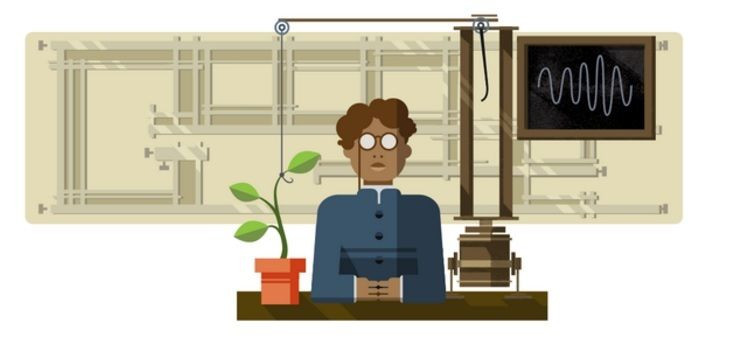Who Is Jagdish Chandra Bose? Google Doodle Honors Indian Scientist

Google has often used its homepage “Doodle” to celebrate famous but perhaps lesser known figures from science and world history, and Wednesday it stayed true to form by honoring scientist and pioneer Jagdish Chandra Bose on his 158th birthday.
Bose, who was a multi-faceted mathematician and scientist on a number of subjects, was born in then British-controlled India – now Bangladesh – on Nov. 30, 1858, and until his death in 1937 was renowned for his work in physics, biophysics, radio science and the invention of the crescograph. He’s also credited with inventing Bengali science fiction writing
The crescograph, which is the main feature of Bose’s “doodle,” is used to measure plants reactions to “various stimuli, proving a parallel between animal and plant tissues,” according to CNET. The discovery essentially proved that plants have nervous systems and do react to the world similar to that of other animals.
But perhaps his greatest achievement, as he’s known to some as the “father of wireless communication,” came in November 1895 when, according to Quartz, Bose fired off an electromagnetic wave 75 feet across a room in Calcutta’s Town Hall to “remotely ring a bell and to explode some gunpowder.”
Bose was also the first to use semiconductor junctions to find radio signals and found electromagnetic waves measuring one millimeter in length.
And though he might not be known in mainstream society, Bose’s fellow scientists have shown him recognition in one of the more unique ways. In 1970, a crater on Earth’s moon was named after Bose.
Bose’s life began in India and he eventually studied physics at Calcutta University, before moving on to Cambridge University in the United Kingdom, where he would study under and conduct research with Nobel Prize winner and physicist John William Strutt.
Bose also made his first entry into the science fiction world in 1896, when he published the short story “The Story of the Missing One,” which stands as one of the first forays into the genre in Bengali literature.
© Copyright IBTimes 2024. All rights reserved.











